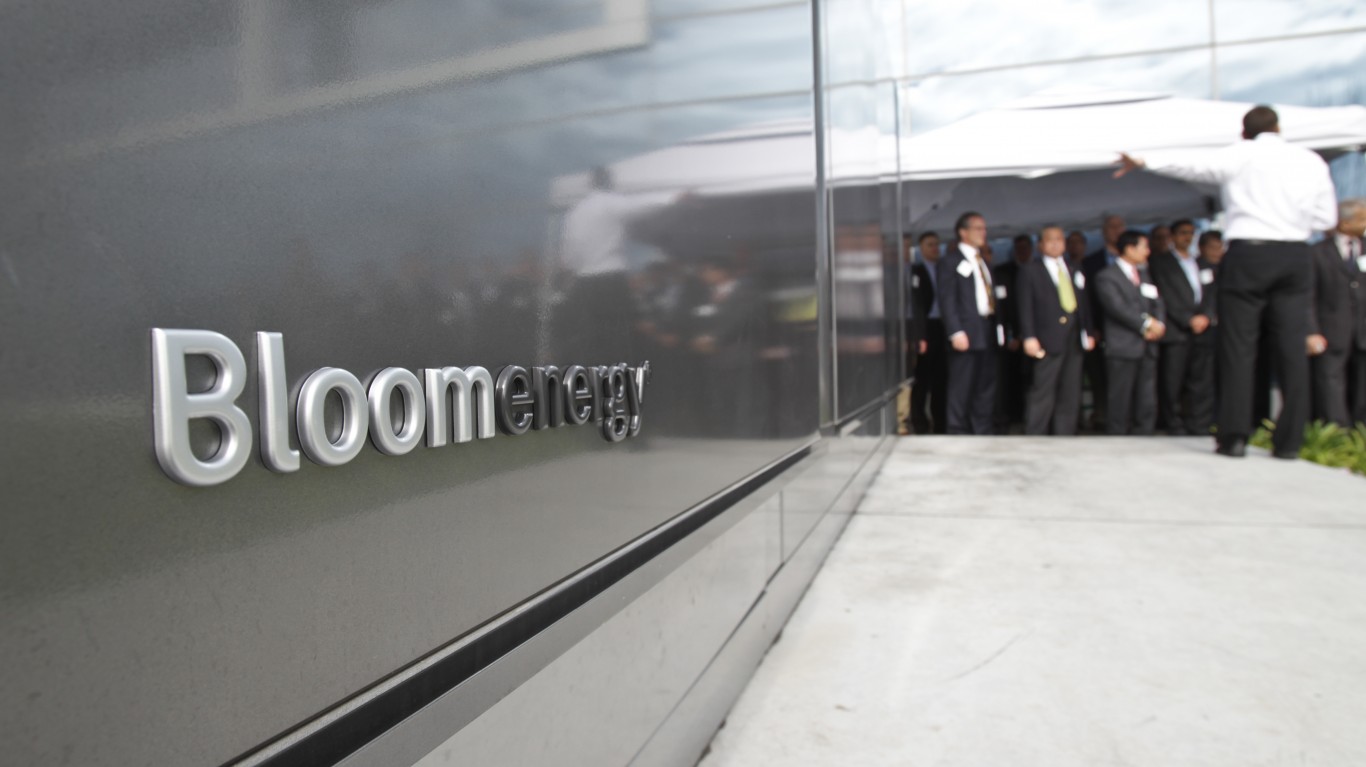

When fuel cell maker Bloom Energy Corp. (NYSE: BE) came public in late July of last year, the shares added $10 to the $15 offering price right out of the chute and climbed to a high of $38 by late September. On Monday, the stock closed at $8.00 and had traded at a new 52-week low of $4.75 before the noon hour. That’s down nearly 88% in just over a year.
What happened? Bloom’s solid oxide fuel cells use natural gas or renewable biogas to generate electricity without combustion. The company hopes to drive down the cost to the point where its Bloom Energy Servers (aka, Bloom Boxes) are competitive with wind and solar generation.
Bloom’s problems should be readily apparent. First, solid oxide fuel cells emit about half as much carbon while using biogas emits no carbon, just like wind and solar generation. Most of the produced carbon can be captured, but that would run up the cost. Because both New York and California have adopted energy policies requiring 100% renewables over the next several years, Bloom’s access to acceptable renewable biogas may be either limited or expensive to build out.
Second, of course, is cost. As the cost of wind and solar continue to fall, partly due to growing scale, it’s difficult for solid oxide fuel cells to keep up in the race to the bottom.
Fuel cells also have their positives (low water use, no nitrogen oxide or particulate emissions) and the Bloom Boxes can scale up by adding more Boxes to a cluster. In its second-quarter letter to shareholders Monday, the company said it had sales acceptances for 280 to 310 100-kilowatt (kW) systems for the third quarter at an average sales price of $6,300 to $6,600 per kW and a total installed system cost of $4,125 to $4,425 dollars per kW.
At the installed cost, a 100-kW Bloom Box configuration would cost $412,500 to $442,500. A 100-kW solar photovoltaic system may cost less than half that much.
On the company’s conference call, Chief Financial Officer Randy Furr said that 2020 acceptance growth [that is, the number of systems accepted by customers after the box is turned on and is producing full power] “will not be as great in 2020 as it was in 2019. And we still anticipate, from what’s been booked so far this year with the mix that we’re seeing, we anticipate that we’ll still get pretty healthy top-line acceptance growth, but we expect [average selling prices] to decline in about the same amount translating to a flat revenue at the top.”
In the second quarter, Bloom reported 271 acceptances from 10 different customers. The outlook for acceptance growth in 2020 is muted and the sales price is declining. That’s not what analysts wanted to hear.
As the noon hour ended Tuesday, Bloom’s shares traded down nearly 38%, at $4.97 in a 52-week range of $4.75 to $38.00. The consensus price target is $21.63. Don’t expect that number to endure.
Thank you for reading! Have some feedback for us?
Contact the 24/7 Wall St. editorial team.
 24/7 Wall St.
24/7 Wall St.

